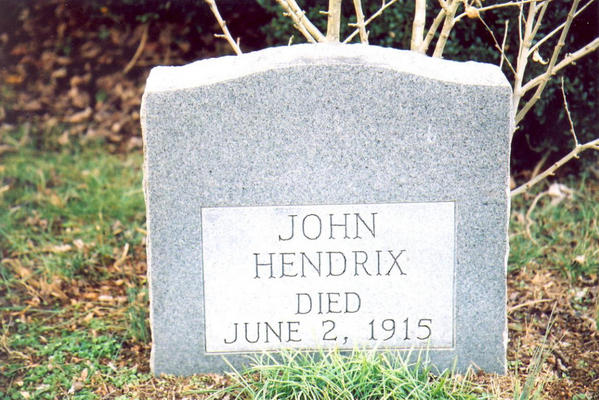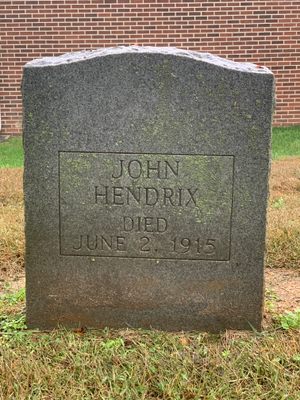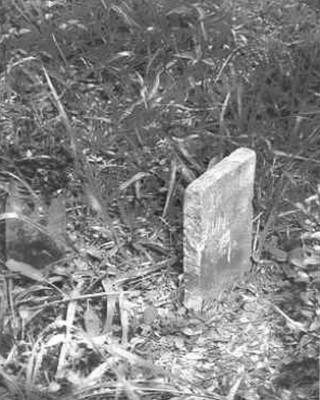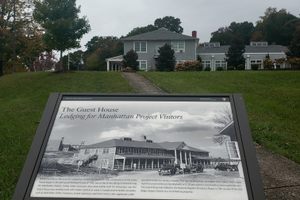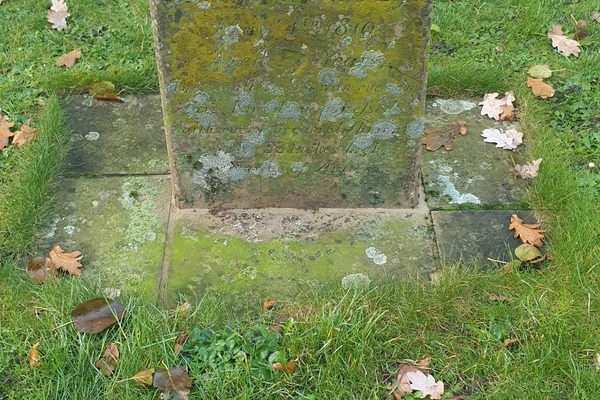About
Oak Ridge, a town once hidden in secrecy in the East Tennessee hills, continues to fascinate people to this day. Part of the top-secret Manhattan Project, the “Secret City” has a rich history of world-changing science and research that helped end World War II and has earned itself international recognition with continued advances in science.
But what many don’t know is that Oak Ridge’s legacy was predicted nearly 40 years earlier before tensions ever began in Europe, with tales of legend and folklore that not only turned out to be true, but sealed the Secret City’s place in history.
On the highest point in the Hendrix Creek Subdivision in Oak Ridge lies a vacant lot with a quiet, single gravestone that marks the final resting place of John Hendrix. Around the turn of the 20th century, having just lost his youngest daughter Ethel Hendrix to diphtheria, Hendrix was beside himself in misery. His wife, Julia Ann Hendrix, had just left him and took off with his three other children to Arkansas. After his wife sent a letter confirming she would never return and seemingly blaming him for Ethel’s death, Hendrix slipped into despair, turning to faith and prayer for salvation.
As the story goes, during one prayer, he heard a loud voice telling him to sleep on the ground for 40 days and nights, and if he did this he would soon learn the future of Bear Creek Valley. On the 41st morning, he emerged from the woods with detailed visions and told any and all passersby that:
“Bear Creek Valley someday will be filled with great buildings and factories, and they will help toward winning the greatest war that ever will be.”
“There will be a city on Black Oak Ridge, and the center of authority will be on a spot that is middle-way between Sevier Tadlock’s farm and Joe Pyatt’s place.”
“A railroad spur will branch off the main L&N line and run down toward Robertsville, and then it will branch off and turn toward Scarboro.”
“Big engines will dig big ditches and thousands of people will be running to and fro. They will be building things, and there will be great noise and confusion, and the earth will shake. I’ve seen it; it’s coming.”
These predictions were accurate down to the exact location. Nearly 30 years after his death in 1915, the iconic uranium processing facilities that changed the course of history during World War II were erected in Bear Creek Valley. Y-12, K-25, S-50, and the X-10 Graphite Reactor were constructed in just 18 months. Some of these buildings produced uranium-235, which fueled the first atomic bomb that contributed to ending the great war.
The south slope of Black Oak Ridge eventually became the birthplace of the city of Oak Ridge. The area between Tadlock's and Pyatt's place did, in fact, become the center of authority for Oak Ridge during the Manhattan Project era. The railroad spur was laid out exactly where Hendrix said it would be, and approximately 75,000 people called Oak Ridge home during the height of the war effort.
Hendrix's descendants also tell of other things he predicted, such as "cargo would be transported through the air," and this was before there were any airplanes. They also remember him saying, "when they cut that right of way for the railroad spur, they will split a tree." His granddaughter said they kept a small half stump painted white for years.
While Hendrix’s gravestone has been replaced since his death, visitors can still marvel at the legendary man’s burial site. At the grave, you’ll find a large Boxwood tree planted by his son Curtis Hendrix many years ago. The current tombstone was placed there by Dorothy Bruce and her 1966-67 Jefferson Junior High School students.
Related Tags
Know Before You Go
To reach the John Hendrix gravesite, arrive in Oak Ridge and take South Illinois Avenue to Lafayette Drive. After going north for less than a mile, Hendrix Drive turns east and goes up a rise to the highest point in the subdivision named for John Hendrix. Look for the very large Boxwood tree at 123 Hendrix Drive. The grave is on a vacant lot just about 100 feet north of the road.
Community Contributors
Published
March 28, 2019
